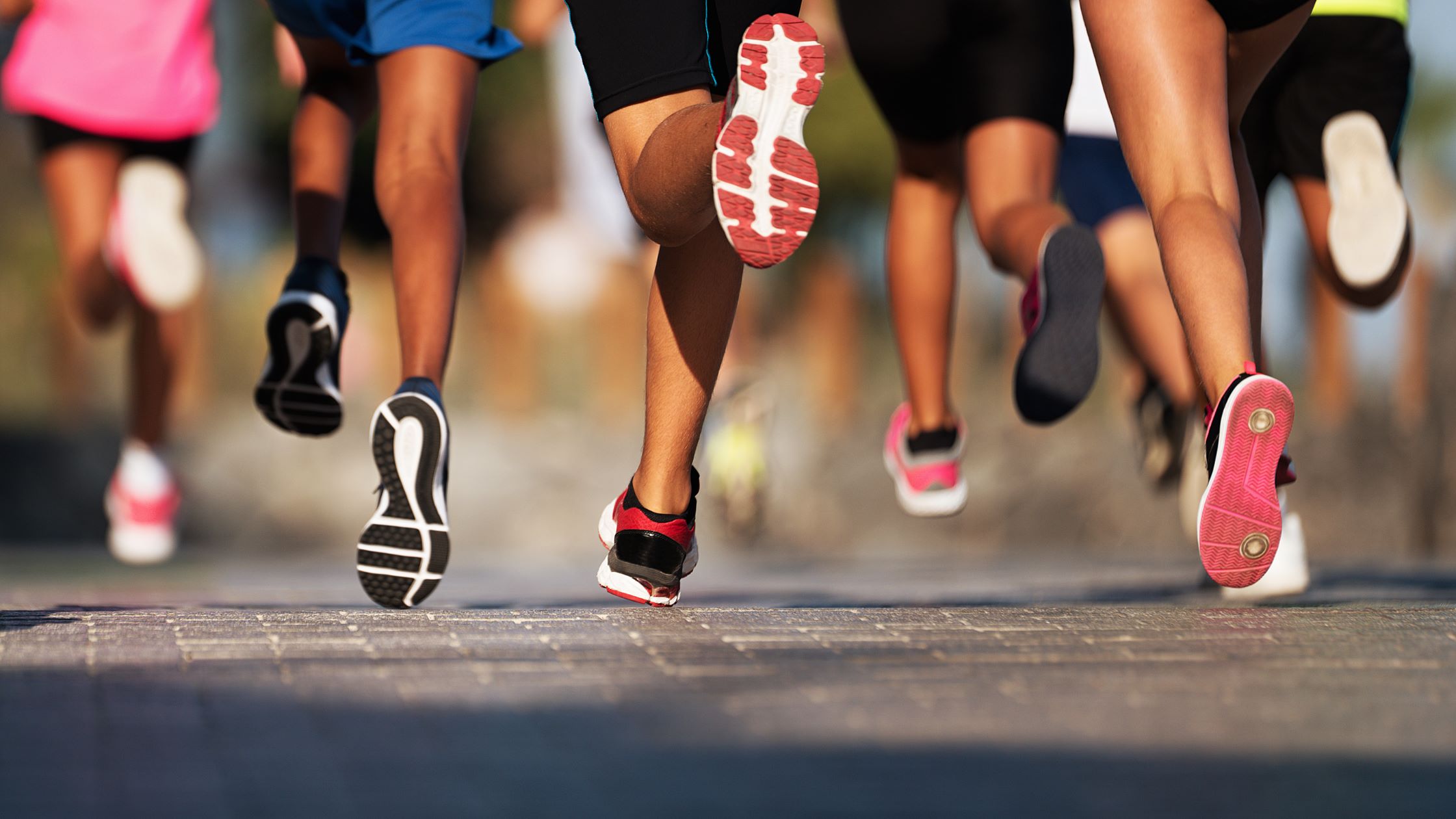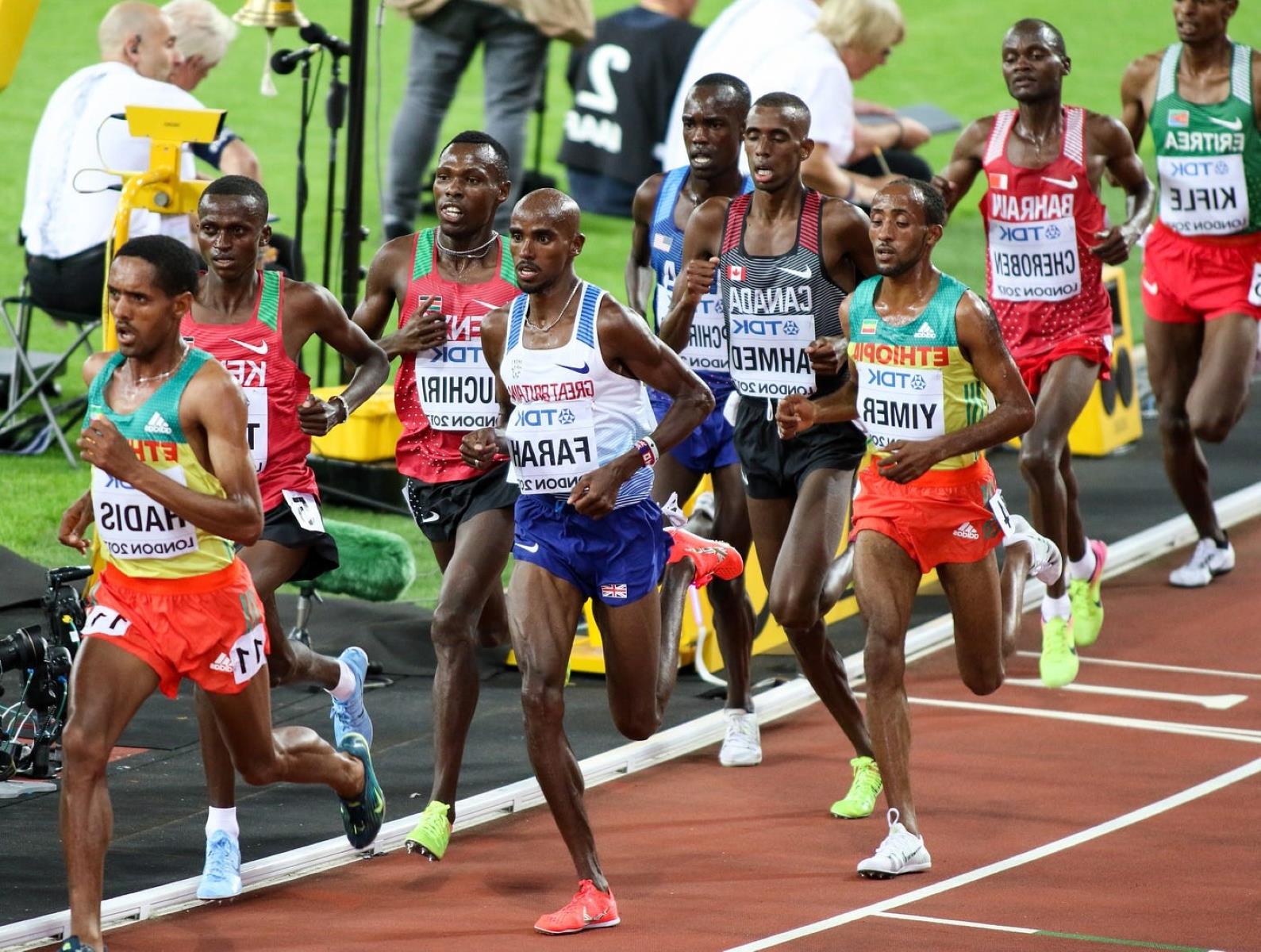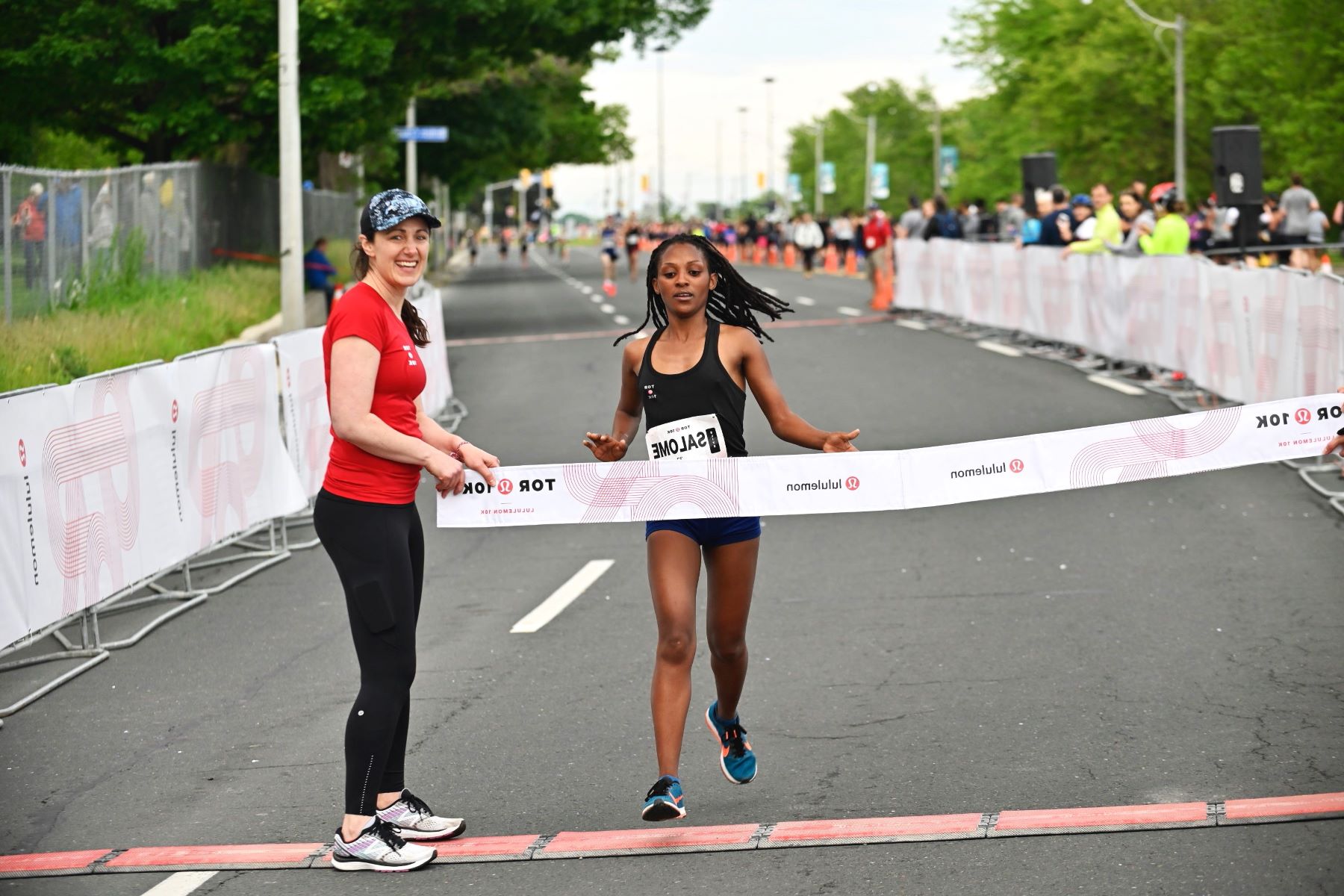Home>Training & Techniques>Unlocking The Secrets Of Running Pace


Training & Techniques
Unlocking The Secrets Of Running Pace
Published: March 4, 2024
Discover effective training and techniques for improving your running pace with our comprehensive guide. Unlock the secrets to running faster and stronger.
(Many of the links in this article redirect to a specific reviewed product. Your purchase of these products through affiliate links helps to generate commission for Therunningadvisor.com, at no extra cost. Learn more)
Table of Contents
The Importance of Understanding Running Pace
Understanding running pace is crucial for runners of all levels, from beginners to seasoned athletes. It goes beyond simply measuring how fast or slow one runs; it encompasses a deeper understanding of one's body, performance, and overall running experience. Here's why comprehending running pace is essential:
-
Performance Monitoring: Running pace serves as a valuable metric for monitoring performance. By tracking pace, runners can gauge their progress over time, identify areas for improvement, and set realistic goals. Whether training for a marathon or aiming to enhance overall fitness, understanding running pace is fundamental to measuring and enhancing performance.
-
Injury Prevention: Maintaining a consistent and appropriate running pace is vital for preventing injuries. Pushing too hard or running too fast can lead to overexertion and potential injuries, while running too slowly may result in poor form and strain on the body. Understanding one's optimal pace helps in striking a balance that minimizes the risk of injuries.
-
Efficient Energy Management: Running at an appropriate pace allows for efficient energy management. By understanding their pace, runners can conserve energy for longer distances, prevent early fatigue, and sustain endurance throughout their runs. This is particularly crucial for long-distance runners and those aiming to improve their overall stamina.
-
Goal Setting and Achievement: Running pace plays a pivotal role in setting and achieving goals. Whether aiming to complete a 5K in a certain time or striving for a personal best in a marathon, understanding one's pace is essential for strategizing and executing a plan to reach these milestones.
-
Enhanced Training: Understanding running pace enables runners to tailor their training regimens effectively. By incorporating specific pace-based workouts, such as tempo runs and interval training, individuals can target different energy systems, improve speed, and build endurance in a structured manner.
In essence, understanding running pace is not solely about speed; it encompasses a holistic approach to running that encompasses performance, injury prevention, energy management, goal setting, and training optimization. By grasping the significance of running pace, runners can elevate their overall running experience and achieve their desired outcomes effectively.
Factors Affecting Running Pace
Several factors influence an individual's running pace, shaping their performance and overall experience as a runner. Understanding these factors is essential for optimizing training, setting realistic goals, and enhancing overall performance. Here are the key elements that affect running pace:
1. Fitness Level
A person's current fitness level significantly impacts their running pace. Those with higher levels of cardiovascular fitness, muscular strength, and endurance tend to maintain faster paces for longer durations. As individuals engage in consistent training and conditioning, their fitness levels improve, leading to enhanced running performance and pace.
2. Terrain and Elevation
The terrain on which a runner trains or competes plays a pivotal role in determining their pace. Running on flat, smooth surfaces typically allows for faster paces compared to rugged or hilly terrain. Elevation changes, such as inclines and declines, directly influence running pace, requiring adjustments in effort and stride length.
3. Weather Conditions
Weather conditions, including temperature, humidity, wind, and precipitation, impact running pace. Extreme heat or cold can hinder performance, while strong winds may pose additional resistance, affecting overall pace. Runners often adjust their pace based on prevailing weather conditions to maintain comfort and optimize performance.
4. Mental and Emotional State
The mental and emotional state of a runner can significantly affect their pace. Factors such as stress, anxiety, motivation, and focus play a critical role in pacing. A positive mindset and mental resilience can contribute to maintaining a steady and efficient pace, while emotional fluctuations may lead to pace variations during a run.
5. Nutrition and Hydration
Proper nutrition and hydration are essential for sustaining an optimal running pace. Inadequate fueling or dehydration can lead to early fatigue, impacting pace and overall performance. Balancing nutrient intake and staying adequately hydrated supports consistent and sustainable running pace.
6. Running Gear and Footwear
The choice of running gear and footwear can influence running pace. Appropriate running shoes that provide cushioning, support, and a comfortable fit contribute to efficient and sustainable pacing. Additionally, lightweight and breathable running attire can enhance comfort and mobility, positively impacting running pace.
7. Training and Recovery
The training regimen and recovery practices adopted by a runner directly impact their running pace. Well-structured training programs that incorporate speed work, endurance training, and adequate rest facilitate pace improvement. Balancing training intensity with sufficient recovery is crucial for sustaining and enhancing running pace over time.
By recognizing and understanding these factors, runners can make informed adjustments to their training, preparation, and race strategies, ultimately optimizing their running pace and overall performance.
Read more: The Secrets Of A Running Expert’s Endurance
Strategies for Improving Running Pace
Improving running pace is a common goal for many runners seeking to enhance their performance and achieve new milestones. Whether aiming to set a personal best in a race or simply striving to run more efficiently, implementing effective strategies can lead to significant pace improvements. Here are several proven strategies for enhancing running pace:
1. Interval Training
Incorporating interval training into a running regimen is a powerful method for boosting pace. By alternating between periods of high-intensity running and active recovery, runners can improve cardiovascular fitness, speed, and overall pacing. Structured interval workouts, such as sprint intervals or timed repetitions, challenge the body to adapt to varying speeds, ultimately leading to enhanced pace capabilities.
2. Tempo Runs
Tempo runs, also known as threshold runs, involve sustained efforts at a comfortably hard pace. These workouts improve lactate threshold and endurance, enabling runners to maintain faster paces for longer durations. By integrating tempo runs into training schedules, individuals can develop the ability to sustain challenging paces, leading to overall pace enhancement.
3. Strength Training
Engaging in regular strength training routines contributes to improved running pace. Strengthening key muscle groups, such as the quadriceps, hamstrings, and core, enhances running efficiency and power. Stronger muscles provide better support and propulsion, allowing for more effective and sustainable pacing during runs.
Read more: Determining The Optimal Pace For Long Runs
4. Hill Repeats
Incorporating hill repeats into training sessions is an effective strategy for pace improvement. Running uphill challenges the body's cardiovascular system and leg muscles, leading to enhanced strength and power. As a result, runners develop the ability to maintain faster paces on flat terrain, benefiting from the increased strength and efficiency gained from hill training.
5. Consistent Speed Work
Consistent speed work, including track workouts and structured speed intervals, is essential for pace enhancement. By regularly engaging in speed-focused training sessions, runners improve their ability to sustain faster paces and develop a more efficient running form. These targeted workouts directly contribute to overall pace improvement and increased speed capabilities.
6. Proper Recovery and Rest
Ensuring adequate recovery and rest is crucial for pace improvement. Overtraining and insufficient rest can lead to fatigue and hinder pace progression. By allowing the body to recover effectively between training sessions, runners optimize their ability to perform at faster paces, ultimately contributing to pace enhancement.
By integrating these strategies into their training routines, runners can effectively enhance their running pace, achieve new performance milestones, and experience the satisfaction of reaching their pace-related goals. Each strategy plays a vital role in developing the speed, endurance, and overall pacing capabilities necessary for sustained pace improvement.
Utilizing Technology to Track and Improve Running Pace
In the modern era of running, technology has revolutionized the way runners track and enhance their pace, providing valuable insights and tools for performance optimization. From advanced GPS-enabled devices to innovative running apps, a myriad of technological solutions are available to aid runners in their quest to improve their pace and overall running experience.
GPS Running Watches and Trackers
GPS running watches and trackers have become indispensable tools for runners seeking to monitor and analyze their pace with precision. These devices utilize satellite technology to accurately track running routes, distance covered, and real-time pace. By leveraging GPS data, runners can gain a comprehensive understanding of their pace variations across different terrains and training sessions. Furthermore, these devices often offer features such as lap tracking, heart rate monitoring, and pace alerts, empowering runners to make real-time adjustments to their pace and training intensity.
Running Apps and Online Platforms
The proliferation of running apps and online platforms has provided runners with access to a wealth of pace-tracking and improvement resources. Popular running apps offer features such as GPS tracking, pace analysis, and personalized training plans tailored to individual pace goals. Additionally, these apps often integrate social and community elements, allowing runners to share their pace achievements, seek motivation, and engage in friendly competition with fellow runners. Furthermore, online platforms and training websites offer in-depth pace analytics, performance tracking, and virtual coaching, enabling runners to delve into detailed pace metrics and receive personalized guidance for pace enhancement.
Wearable Fitness Technology
The advent of wearable fitness technology, including smartwatches and fitness bands, has significantly contributed to the seamless tracking and improvement of running pace. These devices not only monitor pace and distance but also provide insights into other vital metrics such as cadence, stride length, and elevation changes. By harnessing these advanced metrics, runners can identify areas for pace refinement, optimize their running form, and make informed adjustments to their pacing strategies. Moreover, wearable fitness technology often integrates with comprehensive health and fitness platforms, allowing runners to synchronize pace data with nutrition, sleep, and recovery metrics for a holistic approach to pace improvement.
Virtual Training and Analysis Tools
Virtual training and analysis tools have emerged as valuable assets for runners aiming to refine their pace through data-driven insights and virtual coaching. These tools utilize advanced algorithms to analyze pace trends, running economy, and performance benchmarks, providing runners with actionable recommendations for pace enhancement. Additionally, virtual training platforms offer interactive pace-based workouts, simulated race experiences, and personalized pacing strategies, enabling runners to hone their pace capabilities in a virtual yet immersive setting.
By embracing and leveraging these technological advancements, runners can gain a competitive edge in their pursuit of pace improvement. The seamless integration of GPS tracking, pace analysis, virtual coaching, and community engagement empowers runners to not only track their pace accurately but also embark on a journey of continuous improvement, ultimately unlocking their full potential in the realm of running pace.
The Mental Aspect of Running Pace
The mental aspect of running pace holds profound significance in the realm of running, exerting a substantial influence on a runner's performance, endurance, and overall experience. While physical conditioning and technique play pivotal roles in determining pace, the mental fortitude and psychological approach of a runner are equally instrumental in shaping their ability to sustain and enhance their pace.
Mindset and Focus
A runner's mindset and focus directly impact their ability to maintain a consistent and efficient pace. Cultivating a positive and resilient mindset is essential for overcoming mental barriers and sustaining pace during challenging segments of a run. By fostering a focused mindset, runners can channel their mental energy towards maintaining a steady pace, effectively navigating through fatigue, discomfort, and external distractions.
Pacing Strategies and Visualization
Mental preparation and pacing strategies are integral components of the mental aspect of running pace. Visualizing successful pacing scenarios, strategizing for different segments of a run, and mentally rehearsing pace adjustments empower runners to proactively manage their pace. By visualizing ideal pacing scenarios and mentally preparing for pace variations, runners can approach their runs with confidence and composure, optimizing their mental approach to pace management.
Resilience and Adaptability
Resilience and adaptability are fundamental attributes that contribute to the mental aspect of running pace. Endurance running often presents unforeseen challenges, such as unexpected changes in terrain, weather conditions, or physical discomfort. Developing mental resilience and adaptability enables runners to adjust their pace dynamically, overcome obstacles, and maintain their pacing objectives amidst varying circumstances, ultimately enhancing their overall pace management capabilities.
Motivation and Mental Endurance
Motivation and mental endurance are key determinants of a runner's ability to sustain and improve their pace. Drawing upon intrinsic and extrinsic sources of motivation, such as personal goals, inspirational mantras, or external encouragement, fuels a runner's mental endurance and fortifies their resolve to uphold their desired pace. Cultivating mental endurance enables runners to persevere through pacing challenges, sustain their pace during prolonged efforts, and push beyond perceived limitations.
Self-Awareness and Mindful Pacing
Self-awareness and mindful pacing form the cornerstone of the mental aspect of running pace. By fostering self-awareness, runners can attune themselves to their body's cues, breathing patterns, and mental state, facilitating informed pace adjustments and optimization. Engaging in mindful pacing practices, such as rhythmic breathing, positive self-talk, and present-moment awareness, empowers runners to synchronize their mental and physical faculties, leading to harmonious and sustainable pacing.
In essence, the mental aspect of running pace encompasses a multifaceted interplay of mindset, resilience, adaptability, motivation, and self-awareness. By nurturing a robust mental approach to pace management, runners can transcend the confines of physical limitations, elevate their pace capabilities, and embark on a journey of continuous mental and pace refinement.










